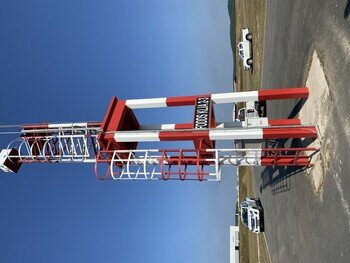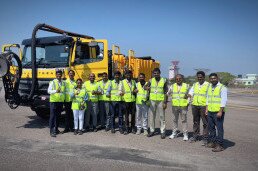
KLIA Enhances Runway Safety With FOD Detection System
- 15 Apr 2021

High-precision Foreign Object Debris Detection System (FODDS)
KL International Airport (KLIA) continues to enhance runway safety as it enters the second phase of the field trial for the high-precision Foreign Object Debris Detection System (FODDS). The first phase was launched in 2019 with two towers completely equipped with state-of-the-art FODDS radars. The second phase involves the full installation of the remaining nine towers with the same high precision radars and is expected to be completed by the end of November this year. The radars can detect any Foreign Object Debris (FOD) within the range of 500 meters in 10 seconds by using the latest high-end radio over fibre technology. The new technology enhances the accuracy and efficiency of runway safety surveillance by detecting even the smallest FOD item i.e., rice grain, pebble, wildlife to avoid unwanted aircraft incidents or accidents from happening. The second phase of the FODDS will be fully operational by Q2 of 2022. The installation of the new advanced system is a tripartite collaboration between Malaysia Airports, Hitachi Kokusai Electric Co., Ltd. (HiKE) and Universiti Teknologi Malaysia (UTM).
The group chief executive officer of Malaysia Airports, Dato’ Mohd Shukrie Mohd Salleh said, “KLIA has been keeping up with the latest technology and global airport practices to strengthen operational safety. We are proud to be the first airport in the world to be installed with this fully functional new FODDS technology on our runway, after the prototype in Narita, Japan. This is an example of embracing technology to future proof our airport and be more ready to handle future demands with the recovery of air travel. We are committed to ensure the highest level of safety to both our airline partners as well as passengers. The airlines can be assured of seamless operations whereas passengers will experience smooth landings and take-offs.”
The new FODDS comprise state-of-the-art radars that are highly accurate and fast in detecting any FOD within the range of 500 meters in 10 seconds through the millimeter wave radar over optical fiber which is also known as high-end radio over fibre technology. High resolution cameras are used to ensure high quality images of the FOD are captured upon detection. The FODDS also enables real-time data collection thus expediting operations in identifying and clearing the FOD as quickly as possible. FOD can be in organic form such as wildlife, or debris such as aircraft parts or metals, located at inappropriate location within the airport that has the capacity to harm the airport or airline personnel and damage a moving or stationary aircraft.
“Under the International Civil Aviation Organisation (ICAO) regulations, we are required to inspect the runway four times a day. With the FODDS system in place, we are enabling both detection and data collection to happen in real time around the clock. It helps to facilitate immediate clearance of the FOD by the team in the shortest time possible. We will be able to ensure high service levels and at the same time, keep our operational costs low. On top of that, the system is environmentally friendly as it works on low emission of radio waves. But most importantly, the airport community can be reassured of their safety by the high scalability of the FODDS system that can cater to a busy airport when air travel picks up once again,” Dato’ Mohd Shukrie further said.
- CATEGORY
- COUNTRY / AREA
- Malaysia







